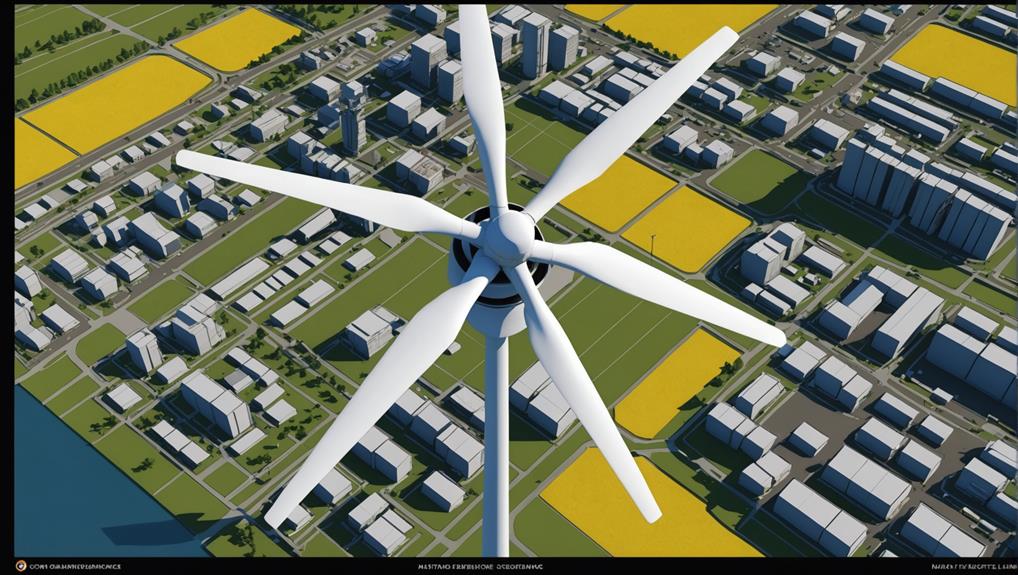To boost the voltage output of your wind turbine, try incorporating a voltage doubler circuit. This configuration uses rectifiers and capacitors in series to effectively double the voltage output. Make certain you have all the required supplies like rectifiers, capacitors, a breadboard, wires, and soldering tools. Efficiently assemble the components and guarantee proper placement in series and parallel connections. Test the voltage output with a voltmeter to monitor stability. If you want to learn more ways to improve your wind turbine's voltage output and tackle voltage stability challenges, explore advanced solutions with commercial inverters.
Key Takeaways
- Build a voltage doubler circuit using rectifiers and capacitors.
- Use high capacitance capacitors to stabilize voltage.
- Strategically place components for effective voltage doubling.
- Ensure accurate schematic layout and precise soldering for optimal performance.
- Test voltage output with a voltmeter for stability at different wind speeds.
Building Voltage Doubler Circuit
To enhance the voltage output of your wind turbine, consider building a voltage doubler circuit using a rectifier and capacitors. By linking the capacitors in a series connection and utilizing a rectifier, you can effectively double the voltage produced by your wind turbine.
This setup is pivotal for increasing the voltage output, especially when dealing with lower RPM values. Capacitors with high capacitance play a significant role in stabilizing and enhancing the voltage generated by the wind turbine.
When rectifying the AC output from the wind turbine, it's worth mentioning that the resulting DC voltage may be slightly lower than the input voltage. However, with the voltage doubler circuit in place, you can offset this decrease and still achieve a higher overall voltage output.
Essential Supplies and Components
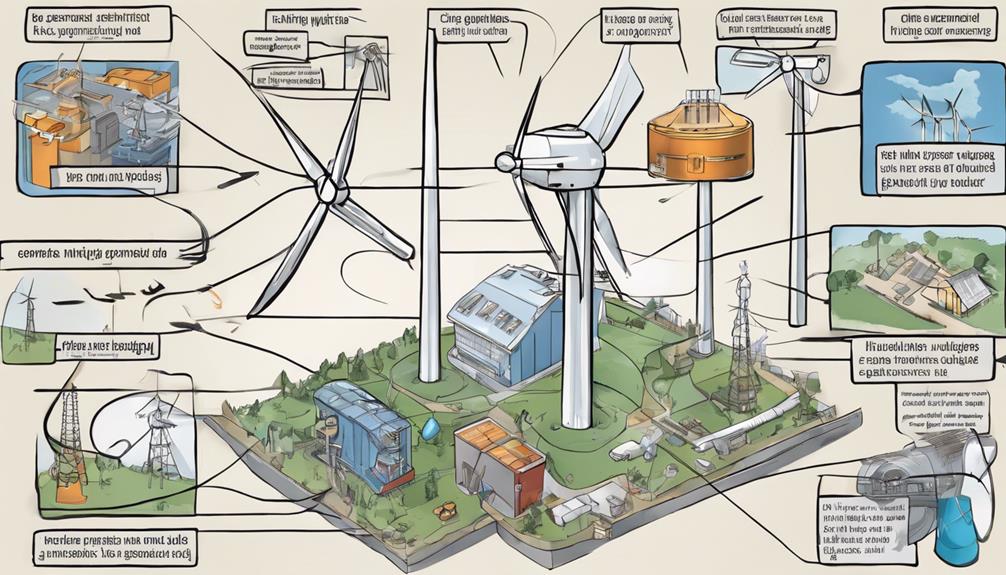
Essential supplies and components required for increasing the voltage output of a wind turbine include rectifiers, capacitors, a breadboard, wires, and soldering tools.
Capacitors play an important role in stabilizing and boosting the voltage output, with high capacitance and a 35-volt rating being ideal for this purpose.
The rectifier, commonly salvaged from a computer power supply, is essential for converting AC to DC, facilitating efficient voltage generation.
Proper placement of components such as capacitors and the rectifier is key to achieving a functional circuit layout.
By incorporating components like capacitors in series and parallel connections, you can effectively double and stabilize the voltage output of the wind turbine.
Ensuring the correct integration of these components into the circuit layout is crucial for maximizing the voltage output and enhancing the overall efficiency of the wind turbine system.
Efficient Assembly Techniques
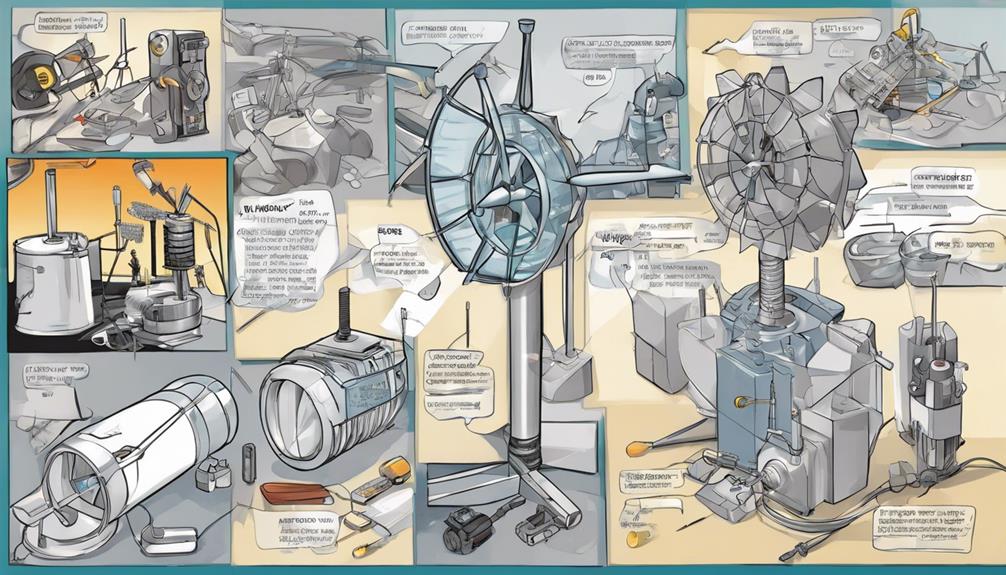
For efficient assembly techniques in increasing the wind turbine voltage output, strategic placement of components is necessary. When assembling the circuit board, consider utilizing the long leads of capacitors for easy connections underneath.
Best positioning involves central placement of the rectifier and capacitors around the periphery, promoting a tidy and well-organized layout. By avoiding jumper wires and excessive soldering, you can guarantee a clean and efficient circuit design.
Proper placement of capacitors within the circuit layout is vital as it can greatly enhance voltage stability and overall performance. Paying attention to these assembly techniques not only improves the functionality of the wind turbine but also simplifies maintenance and troubleshooting processes.
Schematic Connection and Soldering
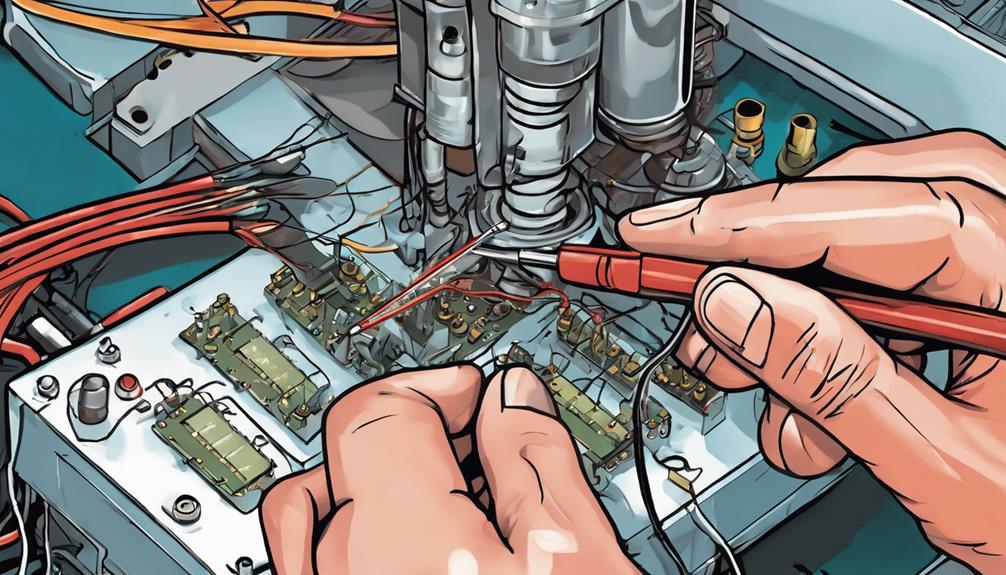
Consider how the strategic placement of components impacts the optimization of wind turbine voltage output through meticulous schematic connection and precise soldering techniques. Proper schematic connection is essential for enhancing the voltage output of a wind turbine system. By following the schematic layout accurately, you can ensure efficient electrical connections and minimize voltage losses. Soldering components with precision is crucial to establish a stable and reliable circuit performance, ultimately maximizing the potential voltage output. Efficient soldering techniques play a significant role in preventing fluctuations in voltage and maintaining consistent power generation.
| Efficient Techniques | Benefits |
|---|---|
| Strategic Soldering | Stable Electrical Connection |
| Accurate Schematic Layout | Minimized Voltage Losses |
| Precise Component Placement | Reliable Circuit Performance |
| Meticulous Connection | Maximized Voltage Output |
Testing for Voltage Output
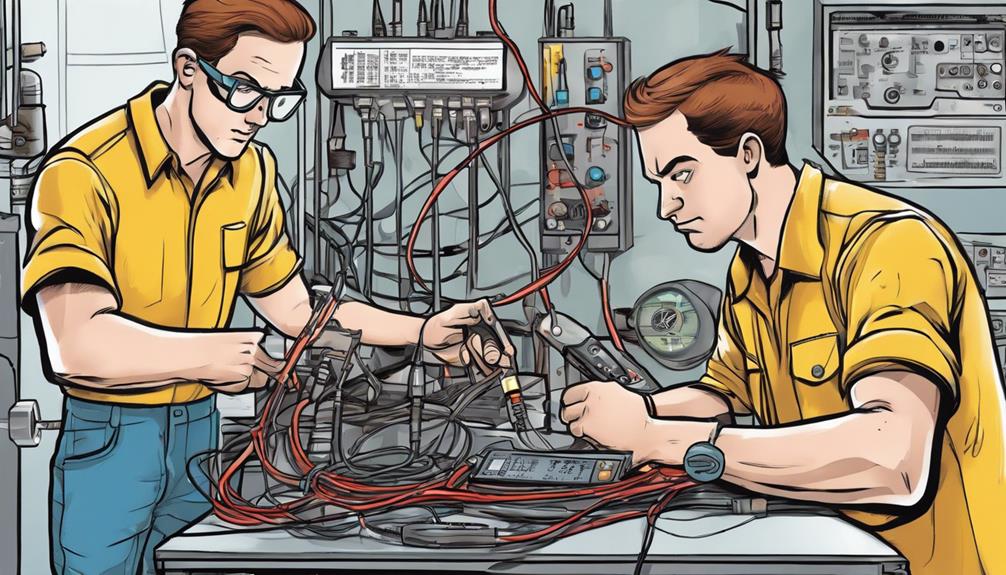
To assess the voltage output of your wind turbine accurately, utilize a voltmeter to measure the generated power. Here are some steps to follow:
- Verify Functioning: Before testing, verify that the wind turbine is functioning correctly and is exposed to adequate wind speeds for accurate readings.
- Measure at Different Wind Speeds: Record the voltage output at various wind speeds to analyze how the output varies with changing wind conditions.
- Check for Stability: Monitor the consistency of the voltage output over time to evaluate the stability of the wind turbine's performance.
- Compare with Specifications: Compare the measured voltage output with the expected values based on the wind turbine's design and specifications to confirm its efficiency.
Voltage Stability Challenges

Wind turbine systems often face voltage stability challenges due to their variable frequency AC output. The fluctuating frequency of wind turbines can lead to variations in voltage output, making it challenging to maintain stable voltage regulation.
Inverters, which are essential components in converting the variable frequency AC output to usable power, often struggle to ensure consistent voltage levels. The rectification process, which converts AC to DC, can help address these challenges by providing a more stable voltage output. However, fluctuations in the rectified voltage output still occur with changes in turbine RPM and frequency, impacting the overall stability of the system.
To mitigate these issues, commercial inverters like ABB's ACS 355 have been designed to handle variable input frequencies and offer solutions for maintaining stable voltage regulation in wind turbine applications. Proper implementation of rectification and advanced inverter technology can notably enhance voltage stability in wind turbine systems.
Solutions for Regulation
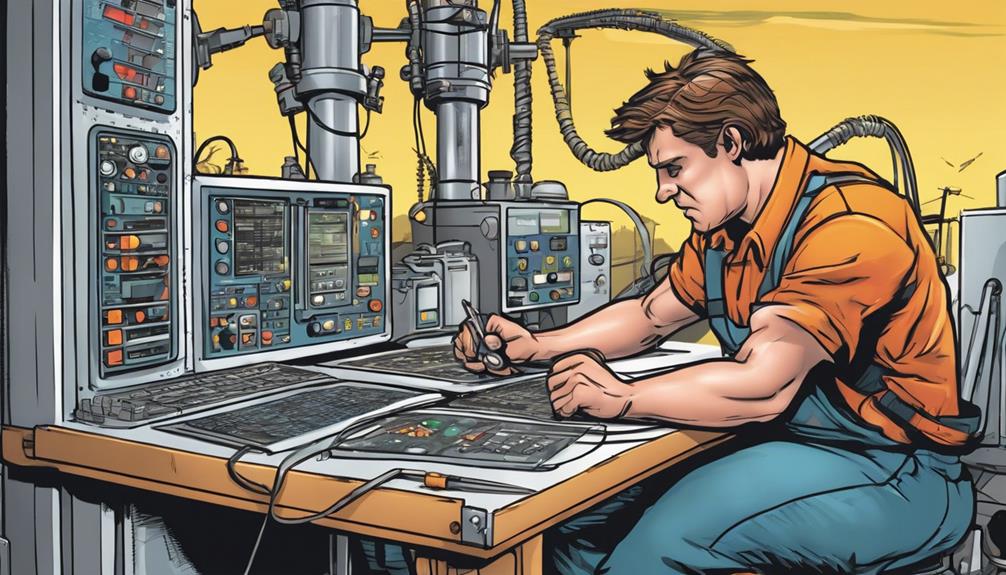
You can explore various methods for voltage regulation to address stability challenges in wind turbine systems.
Consider utilizing different inverter options to guarantee a stable voltage output and efficient power transfer.
Voltage Regulation Methods
When regulating voltage output in wind turbines, converting variable frequency AC to stable DC through rectification is a common method used to maintain consistent power generation.
To effectively regulate voltage in wind turbines, consider the following methods:
- Inverters with Integrated Rectifiers: Utilizing inverters with integrated rectifiers can help stabilize voltage output despite RPM fluctuations, ensuring a more reliable power generation process.
- Rotor-Fed Asynchronous Machines: An alternative solution for voltage regulation involves using rotor-fed asynchronous machines, which synchronize phases to regulate voltage effectively.
- Minimize Power Transfer Through Inverters: By minimizing power transfer through the inverter, you can better align the wind turbine's frequency with the grid frequency, resulting in a more stable voltage output.
- Commercial Inverters like ABB's ACS 355: Consider using commercial inverters like ABB's ACS 355 for medium-sized wind turbines, as they offer variable input frequency handling capabilities, contributing to efficient voltage regulation.
Stability Solutions
To enhance voltage stability in wind turbines, implementing appropriate solutions for regulation is essential in ensuring consistent power generation. One key aspect is the use of rectification to convert variable frequency AC to DC, stabilizing voltage output.
By utilizing inverters with integrated rectifiers, wind generators can provide a stable voltage input. Another effective solution is the consideration of rotor-fed asynchronous machines, which help maintain voltage stability even with RPM variations.
Implementing power transfer mechanisms is also critical to align grid frequency with wind turbine output, promoting stable operation. Commercial inverters like ABB's ACS 355, with suitable power ratings, are recommended for wind turbine systems.
These stability solutions play a significant role in optimizing voltage output and ensuring reliable performance of wind turbines.
Inverter Options
How can wind turbines benefit from utilizing various inverter choices for voltage regulation?
Inverter choices play an essential role in ensuring stable voltage regulation and aligning wind turbine output with grid requirements.
Here are four key ways inverter choices contribute to optimizing wind turbine performance:
- Commercial Inverter Choices: Utilizing choices like ABB's ACS 355 is beneficial for medium-sized wind turbines as they offer stable voltage regulation.
- Integrated Rectifiers: Some inverters come with integrated rectifiers to convert variable frequency AC to stable DC, enhancing power management efficiency.
- Rotor-fed Asynchronous Machines: These machines provide an alternative solution for maintaining voltage stability within wind turbine systems.
- Proper Selection: Selecting inverters based on power ratings is crucial to ensuring reliable voltage regulation and meeting grid requirements in wind energy applications.
Commercial Inverter Considerations
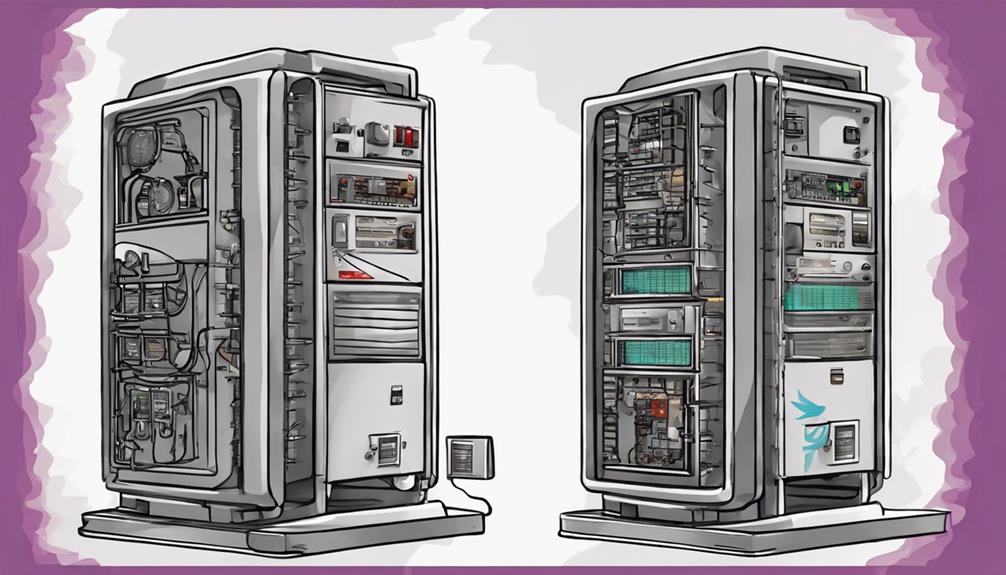
When considering commercial inverters for your wind turbine, focus on the power ratings, installation guidelines, and compatibility verification.
Selecting the right inverter based on your system's power rating is important for best performance.
Ensuring proper installation and compatibility will help you achieve stable voltage regulation and efficient power conversion.
Inverter Power Ratings
Considering the power rating of commercial inverters like ABB's ACS 355 is vital when aiming to increase the voltage output of a wind turbine system.
Here are some key points to keep in mind regarding inverter power ratings:
- Selecting the Right Size: Confirm the inverter's power rating matches the power output of the wind turbine to handle it effectively.
- Stability in Voltage Regulation: Opt for commercial inverters that are designed for stable voltage regulation in wind turbine systems.
- Installation Considerations: Proper installation of the inverter is necessary to guarantee seamless integration with the wind turbine system.
- Frequency Flexibility: Look for inverters that can manage variable input frequencies from wind turbines to adapt to changing conditions efficiently.
Installation Guidelines
Verify the proper setup of commercial inverters plays a crucial role in maximizing efficient voltage regulation and stability in wind turbine systems. When choosing commercial inverters for your wind turbine application, take into account the power rating of the inverters, like ABB's ACS 355, especially for medium-sized systems. Confirm the compatibility of the inverters with the power output requirements of your wind turbine to ensure seamless integration. Install drives that can handle variable input frequencies to accommodate the fluctuations in wind turbine RPM and guarantee peak performance. Utilize commercial inverters specifically tailored for wind turbines to enable practical and efficient power conversion. Refer to the table below for more insights on installation guidelines related to commercial inverters:
| Installation Guidelines | Commercial Inverters |
|---|---|
| Power Rating | Consider the power rating of the inverters, such as ABB's ACS 355. |
| Compatibility | Verify compatibility with the power output requirements of the wind turbine. |
| Variable Input Frequencies | Select inverters that can handle variable input frequencies. |
| Specific Design | Utilize drives specifically engineered for wind turbines for efficient power conversion. |
| Stability | Ensure consistent voltage output through proper installation and configuration. |
Compatibility Verification
To maximize efficiency, verify the compatibility of the commercial inverter with the wind turbine's power rating.
When considering a commercial inverter for your wind turbine system, follow these key steps:
- Power Rating Match: Confirm that the commercial inverter's power rating aligns with the requirements of your wind turbine to avoid underperformance or damage.
- ABB ACS 355 Series: Consider ABB's ACS 355 series as a reliable option for medium-sized wind turbines, known for their efficiency and effectiveness.
- Variable Input Frequencies: Choose inverters designed to handle variable input frequencies, as they're well-suited for the fluctuating nature of wind turbine systems.
- Consultation and Standards: Adhere to industry standards and consult with experts to determine the specific requirements of your wind turbine system and select the most suitable commercial inverter for best performance.
Frequently Asked Questions
How Can I Get More Power From My Wind Turbine?
To get more power from your wind turbine, consider optimizing blade design, increasing the number of blades, using advanced control systems, and ensuring regular maintenance. These steps can enhance efficiency and boost power generation capacity.
How to Regulate Wind Turbine Voltage?
When it comes to regulating wind turbine voltage, maintain stability and efficiency by integrating inverters with rectifiers, synchronizing phase frequencies, and aligning power transfer with grid frequency. Choose compatible inverters for effective voltage regulation.
Which 3 Factors Can Increase the Power Generated by a Wind Turbine?
To increase power generated by a wind turbine, focus on blade size for capturing more wind, use an efficient generator design, and optimize aerodynamics like adjusting blade pitch. These factors can enhance power output substantially.
How Many Volts Can a Wind Turbine Produce?
Alright, wind turbines can generate voltages ranging from 12 to 48 volts in DC systems and around 690 volts in AC systems. Higher wind speeds lead to increased voltage output due to higher RPM and power generation.
Can Measuring Wind Turbine Output Help in Increasing Voltage Output?
Measuring wind turbine output is crucial for optimizing voltage output. By accurately tracking the energy production of each turbine, adjustments can be made to increase overall voltage output. This data allows for strategic placement and maintenance, improving the efficiency and effectiveness of the wind farm as a whole.
Does Measuring Wind Turbine Output Help in Increasing Voltage Output?
Measuring wind turbine output is crucial for increasing voltage output. By tracking the amount of energy generated, operators can adjust turbine settings to optimize voltage production. This data helps identify potential issues and fine-tune the system for improved performance, making measurement an essential part of wind energy optimization.
Conclusion
So there you have it – by constructing a voltage doubler circuit for your wind turbine, you can easily increase its voltage output.
With the right supplies, efficient assembly techniques, and proper testing, you can overcome voltage stability challenges and guarantee a steady flow of power.
Just like a gust of wind propels a sailboat forward, this circuit will propel your wind turbine to new heights of efficiency and performance.





